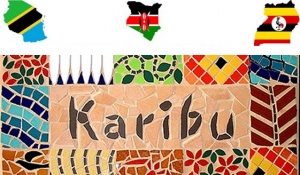Language/Swahili-individual-language/Vocabulary/Numbers-and-Counting
| ◀️ Names and Nationalities — Previous Lesson | Next Lesson — Days, Months, and Seasons ▶️ |
Master Swahili Numbers and Counting
As a Swahili (individual language) language teacher for the past 20 years, I have created this lesson to help you master the cardinal and ordinal numbers, counting, and telling time in Swahili. This lesson is part of the larger course titled "Complete 0 to A1 Swahili (individual language) Course", which is designed to take you from a complete beginner to the A1 level.
Cardinal numbers
Cardinal numbers are used to count and denote the quantity of objects or people. In Swahili, the cardinal numbers from 1 to 10 are:
| Swahili (individual language) | Pronunciation | English |
|---|---|---|
| moja | moh-jah | one |
| mbili | mm-bee-lee | two |
| tatu | tah-too | three |
| nne | n-nay | four |
| tano | tah-noh | five |
| sita | see-tah | six |
| saba | sah-bah | seven |
| nane | nah-neh | eight |
| tisa | tee-sah | nine |
| kumi | koo-me | ten |
For numbers greater than ten, you form them using the root word "kumi" (ten) and adding the corresponding cardinal number. For example, eleven is "kumi na moja", twelve is "kumi na mbili" and so on. It's important to note that Swahili uses a "ten and unit" system similar to English, with the unit following the ten.
Counting with cardinal numbers
When counting objects or people, you use the word "ya" meaning "of" to indicate possession. For instance:
- kitabu kimoja = one book
- magazeti matano = five newspapers
- wanafunzi kumi = ten students
Ordinal numbers
Ordinal numbers are used to denote the order of items in a sequence. In Swahili, the ordinal numbers from 1st to 10th are formed by adding the suffix "-a" to the corresponding cardinal number. For example:
| Cardinal Swahili (individual language) | Ordinal Swahili (individual language) | English |
|---|---|---|
| moja | kwanza | first |
| mbili | pili | second |
| tatu | tatu-tatu | third |
| nne | nne-nne | fourth |
| tano | tano-tano | fifth |
| sita | sita-sita | sixth |
| saba | sabaa-sabaa | seventh |
| nane | nane-nane | eighth |
| tisa | tisa-tisa | ninth |
| kumi | kumi-kumi | tenth |
Telling time in Swahili
Swahili uses the 12-hour clock system to tell time. Therefore, it's essential to know the basic Swahili vocabulary for time-related expressions:
- saa = hour
- dakika = minute
- asubuhi = morning
- mchana = afternoon
- jioni = evening
- usiku = night
To say the time in Swahili, you start with the word "saa" followed by the hour in cardinal numbers, then the minutes in ordinal numbers, and finally the time of day. For instance:
- saa mbili kasorobo = quarter past two
- saa kumi kamili jioni = ten o'clock sharp in the evening
- saa tatu unusu asubuhi = half past three in the morning
Conclusion
Learning Swahili numbers and counting is fundamental to mastering the language. In this lesson, we've covered the cardinal and ordinal numbers, counting, and telling time in Swahili. Use the examples provided here as a basis for practicing and expanding your vocabulary. Remember, practice makes perfect!
Well done on mastering this lesson! Don't miss these related pages to expand your knowledge: Sport & Vegetables.
Other Lessons
| ◀️ Names and Nationalities — Previous Lesson | Next Lesson — Days, Months, and Seasons ▶️ |

